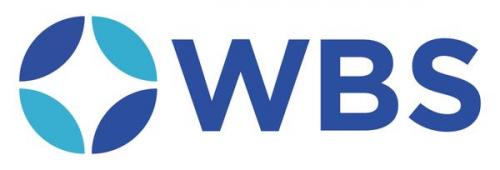
Revisit The Interest Rate Reform Conference, originally presented 13th - 17th July 2020 |
With the increased expectation of some IBORs discontinuation and the increasing regulatory requirements related to benchmarks, a more robust fallback provision and a clear transition plan for benchmark-linked derivatives is becoming paramount for the interest rate market.The current global reform of interest rate benchmarks is radically changing the scenario, adding more and more interest rates, with important consequences for pricing and risk management of financial instruments.
Conference Running Time: 16 Hours
£199.00
CONFERENCE DAY 1: MONDAY 13TH JULY
Keynote: LIBOR Transition in the EU - State of Play
Presenter: Tilman Lüder: Head of the Securities, European Commission
Keynote: “Spread Adjustment Methodologies for Cash Products Referencing U.S. Dollar (USD) LIBOR”
Presenter: Diana Iercosan: Principal Economist, Federal Reserve Board
Building your IBOR Transition Programme
Presenter: Sharon Freeman: Managing Director, Antevorta Consultants
CONFERENCE DAY 2 TUESDAY 14TH JULY
Interest Rates Benchmark Reform and Options Markets
Presenter: Vladimir Piterbarg: MD, Head of Quantitative Analytics and Quantitative Development at NatWest Markets
Looking Forward to Backward-looking Rates: A Modeling Framework for Rates Replacing IBORs
Presenter: Andrei Lyashenko: Head of Market Risk and Pricing Models, Quantitative Risk Management (QRM), Inc.
Pricing of Options and the Transitioning from Libor to RFR Rates
Presenter: Emiliano Papa: Director – Quantitative Analyst, Deutsche Bank
CONFERENCE DAY 3 WEDNESDAY 15TH JULY
Case Study Day: SOFR Transition
Presenter: Navin Rauniar: LIBOR Transition Lead, HSBC
Case Study Day: Discounting Big-Bang: Quant Perspective and Convexity Adjustments
Presenter: Marc Henrard: Managing Partner muRisQ Advisory and Visiting Professor, University College London
Case Study Day: Transition ESTR/EONIA / Transition from LIBOR to SONIA
Presenter: Navin Rauniar: LIBOR Transition Lead, HSBC
CONFERENCE DAY 4 THURSDAY 16TH JULY
Impact of IBOR on Risk Metrics and Models
Presenter: Navin Rauniar: LIBOR Transition Lead, HSBC
Model Risk in IBOR Transitions
Presenter: Gavin Xu: Global Head of Credit and Balance Sheet Management Models, HSBC US
IBOR Transition and Model Uncertainty
Presenter: Sebastien Viguie: CTO of Yields.io
CONFERENCE DAY 5 FRIDAY 17TH JULY
IBOR Transition and linkage to the Risk & Capital Framework
Presenter: Adolfo Montoro: Director, Global Market Risk Analytics, Bank of America
Pitfalls of ISDA Protocol
Presenter: Sharon Freeman: Managing Director, Antevorta Consultants
Panel: Interest Rate Reform
There is a lot of rhetoric issued by the BoE and Fed on using backward looking rates – how are you coping with the modelling challenge around moving from forward to backward looking rates?
Are you finding different functions within your institutions adopting different approaches?
Globally we receive conflicting messages where BoE says no to RFR + CS and Fed being open to RFR + CS. The same applying to backward vs. forward looking – are we heading to multi rate environment where no single discounting curve will take precedence? Does this not just increase the level of systemic risk to the economy, alongside the idiosyncratic risks that currently exist
For SONIA the data goes back to 1997 and makes it easier to model given the existence of this RFR. Nevertheless, there is a lot of debate around the construction of SOFR. From a quant perspective, is SOFR viable in the long run?
Given the Sept spike in SOFR, does SOFR represent a real risk free rate?
So we did not see the spikes in Dec, but we hear much rhetoric about the US economy slowing (coronavirus, trade wars, etc), how do we see SOFR behaving over the next year or so? From a quant perspective have you modelled this?
If we do reach that economic stress point, do we see “SOFRgeddon” occurring i.e. SOFR heads south?
And risk is not just about looking forward, but looking backwards – how about modelling the time series for SOFR? Are we comfortable taking o/n LIBOR and applying spread adjustment, or what about FF or Prime?
In summary, given what we have talked about, have you as a client, started modelling for alternatives such as AMERIBOR, ICE BYI, SONET, AONIA? How about an IR with a CS component added e.g. ITRX FIN, etc.?
Panellists:
- Navin Rauniar: LIBOR Transition Lead, HSBC
- Moorad Choudhry: Independent Non-Executive Director on the Board of Recognise Financial Services Ltd
- Jonathan Schachter: Independent Consultant, Natixis North America
